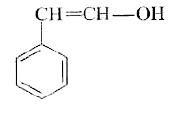Heteropycnosis is exhibited by
Autosome
Chromatid body
Nucleolus
Sex chromosome
The correct Answer is:D
Step-by-Step Solution:
1. Understanding Heteropycnosis: Heteropycnosis is a phenomenon observed in certain chromosomes where specific regions stain more intensely than others. This indicates differences in chromatin structure and density.
2. Chromatin Types: There are two main types of chromatin:
- Heterochromatin: This type of chromatin is densely packed and stains darker. It is often associated with gene repression.
- Euchromatin: This type is less densely packed and stains lighter, typically associated with active gene expression.
3. Positive and Negative Heteropycnosis:
- Positive Heteropycnosis: Occurs when heterochromatin stains darker than euchromatin.
- Negative Heteropycnosis: Occurs when heterochromatin stains lighter than euchromatin.
4. Examples of Heteropycnosis:
- A well-known example of heteropycnosis is observed in the X chromosome of Drosophila (fruit flies) and grasshoppers during spermatogenesis. In these organisms, the X chromosome exhibits heteropycnosis, showing distinct staining patterns.
5. Identifying the Correct Answer: The question asks which type of chromosome exhibits heteropycnosis. Based on the examples and definitions provided:
- The correct answer is sex chromosomes, as they are known to exhibit heteropycnosis, particularly in species like Drosophila and grasshoppers.
Final Answer: Heteropycnosis is exhibited by sex chromosomes.
---
- Heterochromatin: This type of chromatin is densely packed and stains darker. It is often associated with gene repression.
- Euchromatin: This type is less densely packed and stains lighter, typically associated with active gene expression.
- Positive Heteropycnosis: Occurs when heterochromatin stains darker than euchromatin.
- Negative Heteropycnosis: Occurs when heterochromatin stains lighter than euchromatin.
- A well-known example of heteropycnosis is observed in the X chromosome of Drosophila (fruit flies) and grasshoppers during spermatogenesis. In these organisms, the X chromosome exhibits heteropycnosis, showing distinct staining patterns.
- The correct answer is sex chromosomes, as they are known to exhibit heteropycnosis, particularly in species like Drosophila and grasshoppers.
Topper's Solved these Questions
- BOOK - CENGAGE BIOLOGY ENGLISHCHAPTER - CELL: STRUCTURE AND FUNCTIONSEXERCISE - ARCHIVES50videos
CELL: STRUCTURE AND FUNCTIONS
- BOOK - CENGAGE BIOLOGY ENGLISHCHAPTER - CELL CYCLE AND CELL DIVISIONEXERCISE - ARCHIVES (Chose the corrct option):21videos
CELL CYCLE AND CELL DIVISION
- BOOK - CENGAGE BIOLOGY ENGLISHCHAPTER - CHEMICAL COORDINATION AND INTEGRATIONEXERCISE - ARCHIVES26videos
CHEMICAL COORDINATION AND INTEGRATION
Similar Questions
Knowledge Check
- Question 1 - Select One or More
Tautomerism is exhibited by :
A B
B C
C D
D
Tautomerism is exhibited by
View SolutionHomology is exhibited by :
View SolutionThigmotropism is best exhibited by
View SolutionTautomerism is not exhibited by :
View SolutionThe least consistency of shape is exhibited by ..............
View SolutionCis-trans isomerism is exhibited by:
View SolutionNocturnal periodicity is exhibited by
View Solution

